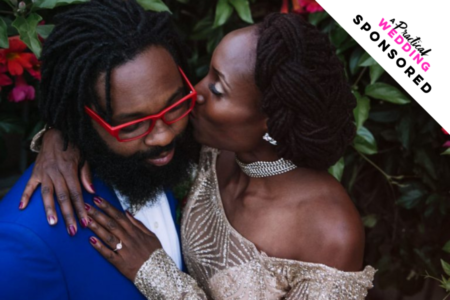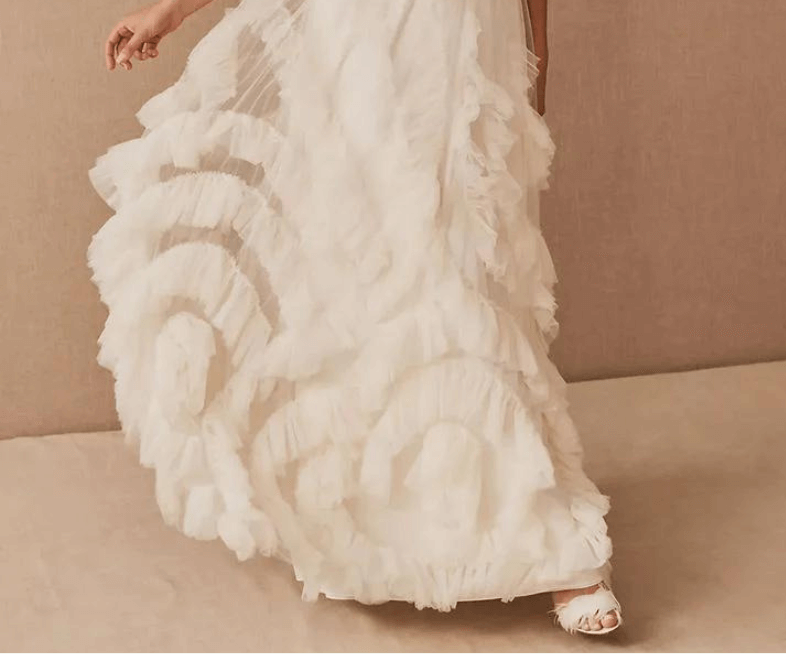
About once every month or two, I get a wedding that’s stunning. The story is aces. The vibe is fun. And I have to reject it because it’s absolutely cultural appropriation. When you work in weddings, you really want to say yes to everything. “The customer is always right” mentality becomes even more personal. Because no matter what choices a couple makes, their wedding is still their wedding, and it’s an expression of their love. But just because it’s heartfelt doesn’t mean we can publish it.
Because as a wedding publication, it’s important for us to draw a line. To lovingly suggest that perhaps “Mexican” or “Asian” is not actually a theme, or that mehndi is not the best choice of body decor if it’s not part of your cultural heritage. Because you know what happens if you smile and nod? Taylor Swift’s “Wildest Dreams” video. Or Katy Perry’s entire career. (Love her, but damn she needs to hire better advisors.)
And what’s even more complicated? It doesn’t feel like there’s a hard line. Sometimes a bindi gets called out, other times the teepee gets a shoutout on the Knot. So how do you know what’s cultural appropriation and what’s not?
Well first, let’s start with a definition.
What is Cultural Appropriation?
According to Wikipedia:
Cultural appropriation is the adoption or use of elements of one culture by members of a different culture… According to authors in the field, cultural (mis)appropriation differs from acculturation or assimilation in that the “appropriation” or “misappropriation” refers to the adoption of these cultural elements in a colonial manner: elements are copied from a minority culture by members of the dominant culture, and these elements are used outside of their original cultural context—sometimes even against the expressed, stated wishes of representatives of the originating culture.
Often, the original meaning of these cultural elements is lost or distorted, which means that these uses may be viewed as disrespectful by members of the originating culture, or even as a form of desecration. Cultural elements which may have deep meaning to the original culture can be reduced to “exotic” fashion by those from the dominant culture. When this is done, the imitator, “who does not experience that oppression is able to ‘play,’ temporarily, an ‘exotic’ other, without experiencing any of the daily discriminations faced by other cultures.”
In short, cultural appropriation is when you take bits of someone else’s culture, typically that of an oppressed group, and adopt it for your own purposes, stripping the object of its significance in the process. For example: wearing a Native American headdress as a Halloween costume. Or crediting a white celebrity with adopting cornrows as an “edgy new hairstyle.”
Almost every job I’ve had, I’ve had to face this. There was a brief period where I was bouncing (think: twerking) in support of some touring black musicians from NOLA. I was constantly explaining that the dance had particular cultural roots, and no, it wasn’t just an edgy dance trend. Then there was the two years I spent running a high-end womenswear line. I had to call out a magazine for publishing clothes I designed in a “tribal” editorial with what was essentially a white girl in aboriginal makeup.
Because of my history (and social justice background) I do often get asked THE question: “Is this cultural appropriation?” The real answer? There’s no one once sentence that can define the boundary between “taking” from a culture and “honoring” it (though this video is pretty accurate). I have, however, started creating some guidelines, that help me identify what’s appropriative versus appreciation:
What’s Cultural Appreciation, Not Cultural Appropriation?
It’s not sacred
Make sure the item, outfit, decor, tradition, etc., is not something that has a spiritual or cultural significance. Do your research. This is the most common issue I come across in the wedding world. After all, people are trying to build a meaningful ceremony. But if you’re thinking of adding an element from another culture’s wedding ceremony in a literal way (as opposed, perhaps, to a vaguely “inspired by” way), chances are very, very good that it’s religiously or culturally sacred. And yes, for those of you wondering, one example of cultural appropriation is indeed Dia De Los Muertos.
It’s not something that people have been shamed for
Here things get more murky. Much of the argument about cultural appropriation is really about cultural colonialism. Western (mostly white) societies have, and continue to, take land and resources from other societies… and make the members of those places feel uncivilized for their native clothes, hairstyles, homes, etc. Assimilation (directly forced, or chosen for the purpose of opportunity) is a painful and multi-generational issue (just ask all the Hispanic kids whose parents wouldn’t speak Spanish or all the people whose natural hair is considered unprofessional). It follows that taking an element that was deemed uncivilized and turning it into something trendy for privileged people ignores the history of erasure and pain people had to go through just to be themselves.
It’s not mass market
This one’s simple. Don’t buy a kimono from H&M. Don’t buy a headdress from a white girl off Etsy. Please, please don’t buy Aztec patterns from Urban Outfitters. If you’re going to be “appreciative” of a culture, make sure you give back to it when you take, and money is a legitimate way to do that. (Want a great example? When Rhianna chose to wear an actual Chinese designer to The Met Gala’s poorly received “Chinese” themed event.)
Here’s the real deal: I don’t believe most things have to be OFF LIMITS. But I also don’t think you get to do things like… be a white rapper who isn’t actively working for the empowerment of Black America, or wear a native headdress unless it was gifted to you directly from the tribe. Each culture’s assets are precious, and with the Internet at my fingertips, it’s on me to question my decisions (and those of my friends) before I place that order on Etsy.






